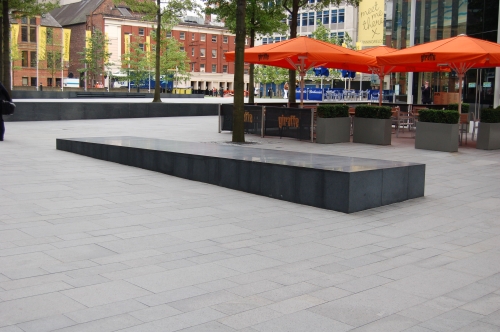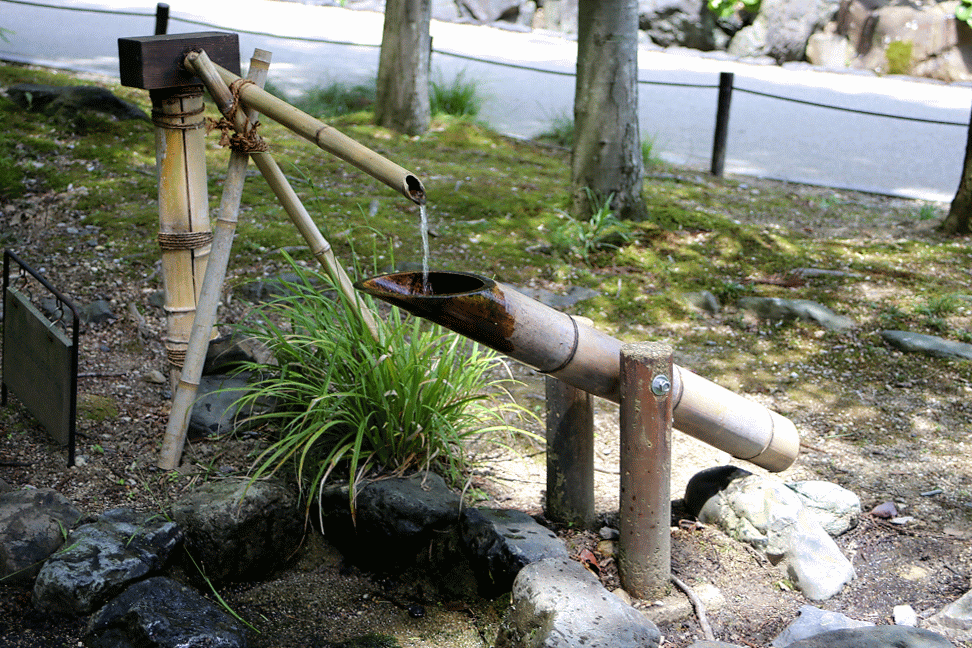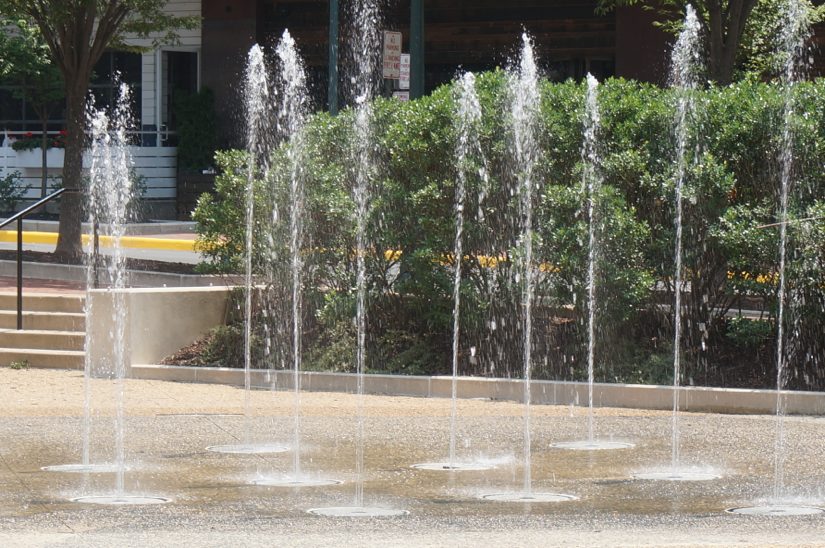Water feature
Contents |
[edit] Introduction
A water feature can be defined as a decorative or recreational component of a garden, landscape or urban area that incorporates some aspect of water.
[edit] History
In some Ancient cultures, water features were constructed in homes and gardens that were built in hot climates. In Greece and Italy, pools or fountains were sometimes placed in open entrance halls in front of the home or in enclosed atriums within the home.
|
Built in the 1700s, the cascades of the Royal Palace of Caserta stretch over two kilometres and include a series of five elaborate Baroque style fountains. The architecture and hydraulics were designed by Luigi Vanvitelli. |
These early water features were powered by several different means, including:
- Gravity and air pressure.
- Hydraulic ram or hydram (a type of hydraulic powered pump).
- Human or animal labour.
With the Industrial Revolution in the 1800s, steam engines were sometimes used to power water features.
[edit] Water feature requirements
Modern structures tend to rely on artificially supplied water and are primarily human-made. Water supply does not need to come from the mains water; some water features incorporate natural supplies from groundwater, rainwater and stormwater runoff.
Water is generally held in an underground or hidden reservoir (sometimes referred to as a sump) and pumped to the water feature. Water may be recirculated once it enters the supply.
Modern devices often require a source of power. This can be mains power or solar or wind power.
[edit] Purpose
Water features may be referred to as water gardens or aquatic gardens when the water feature serves as the primary point of interest within the garden. In addition to aesthetic and recreational purposes, the moving water sometimes performs a secondary irrigation purpose.
Water features may be incorporated into a wide variety of landscape design projects - from parks and green spaces, to gardens, sports sites and large estates such as housing developments, business parks, universities, hospital complexes and so on.
In some urban environments, their purpose may be to create the impression of a more tranquil environment through the production of natural sounds that may help mask unpleasant noises, or increase privacy.
Water features may also be used as an aspect of biophilic design, which attempts to connect people to nature and natural processes. This connection can be made by introducing visual interaction with the 'natural' world outside - perhaps in a courtyard with a water feature and plants.
Water features may be used inside buildings to enhance the visual and acoustic environment.
Water features may also be used to help attract and support certain forms of wildlife. They may also increase humidity in dry regions and help improve air quality.
In Japan, water features can play several important roles. Water can be used to represent renewal through spiritual cleansing and can promote a sense of calm. These water features are generally designed simply with water trickling from a spout into a basin which is often made of stone and surrounded by vegetation. In some gardens, the sound of moving water - in the form of waterfalls or fountains - may serve as a backdrop to meditation.
|
This shishiodoshi is in the Higashiyama Botanical Garden. |
Some Japanese water features - such as the shishiodoshi - perform the opposite function by disrupting the sense of calm. These devices (generally referred to as deer scarers) use the movement of water through a series of weighted bamboo segments to trigger sounds that frighten - rather than attract - unwelcome wildlife (such as deer) from the garden.
[edit] Types of water features
There are small and large scale types of water features.
|
Some smaller water features, such as this aquatic sculpture, can be installed indoors. |
Small water features may be suitable for tabletops or balconies. These come in several forms, including:
- Water spheres.
- Small stone fountains or monoliths.
- Figurines with cascading water elements.
- Self-contained natural scenes.
There are many types of large scale water features:
- Artificial ponds (including habitat ponds), lakes, reflecting pools and lotus pools.
- Grottoes.
- Follies.
- Bird baths.
- Waterfalls, cascades or streams.
- Fountains (including hanging wall fountains, splash fountains, singing and dancing fountains and jeux d'eau fountains).
- Steel or mosaic water walls.
- Spas.
|
Splash fountains, also known as bathing fountains, are often found in urban public spaces. They are designed to be easily accessible and encourage interaction such as children playing or people cooling off on hot days. |
[edit] Related articles on Designing Buildings
Featured articles and news
A change to adoptive architecture
Effects of global weather warming on architectural detailing, material choice and human interaction.
How big is the problem and what can we do to mitigate the effects?
Overheating guidance and tools for building designers
A number of cool guides to help with the heat.
The UK's Modern Industrial Strategy: A 10 year plan
Previous consultation criticism, current key elements and general support with some persisting reservations.
Building Safety Regulator reforms
New roles, new staff and a new fast track service pave the way for a single construction regulator.
Architectural Technologist CPDs and Communications
CIAT CPD… and how you can do it!
Cooling centres and cool spaces
Managing extreme heat in cities by directing the public to places for heat stress relief and water sources.
Winter gardens: A brief history and warm variations
Extending the season with glass in different forms and terms.
Restoring Great Yarmouth's Winter Gardens
Transforming one of the least sustainable constructions imaginable.
Construction Skills Mission Board launch sector drive
Newly formed government and industry collaboration set strategy for recruiting an additional 100,000 construction workers a year.
New Architects Code comes into effect in September 2025
ARB Architects Code of Conduct and Practice available with ongoing consultation regarding guidance.
Welsh Skills Body (Medr) launches ambitious plan
The new skills body brings together funding and regulation of tertiary education and research for the devolved nation.
Paul Gandy FCIOB announced as next CIOB President
Former Tilbury Douglas CEO takes helm.
UK Infrastructure: A 10 Year Strategy. In brief with reactions
With the National Infrastructure and Service Transformation Authority (NISTA).
Ebenezer Howard: inventor of the garden city. Book review.
Airtightness Topic Guide BSRIA TG 27/2025
Explaining the basics of airtightness, what it is, why it's important, when it's required and how it's carried out.



























